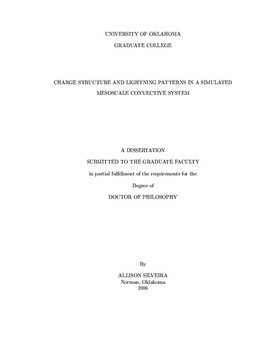| dc.description.abstract | Observational analyses of electric field measurements and inferred charge structure within the stratiform region of a mesoscale convective system (MCS) repeatedly reveal quasi-steady, horizontal charge layers at and above the melting level. Previous studies have concluded charge advection can explain the uppermost layers as charged ice particles are ejected from the convective line into the weaker downdrafts of the transition zone. These layers have been observed to slope through and persist beyond the transition zone into the weak, broad mesoscale updrafts of the stratiform region. Likewise, significant electric fields are consistently measured in the layer below -10°C through the melting level, indicative of appreciable charge density, yet are apparently independent of the convective line. The contribution of several possible charge separation processes to the generation and maintenance of charge layers near the melting level are examined in this study. A high-resolution, three-dimensional model with full dynamics and two-moment microphysics was employed. The cloud microphysics were improved to include the prediction of liquid water fractions on graupel and snow to better parameterize the hypothetical charge separation mechanisms.
Similar structure to the standard conceptual model of a leading-line, trailing stratiform MCS was exhibited in the model solutions with respect to observed kinematics, microphysics, and charge. In contrast with earlier two-dimensional modeling studies, charge advection did not account for any appreciable charge beyond the transition zone. However, through use of the new mixed-phase particle microphysical scheme, a charging mechanism associated with particle melting was found to be capable of simulating widespread, appreciable charge near the melting level of the stratiform region. | en_US |
